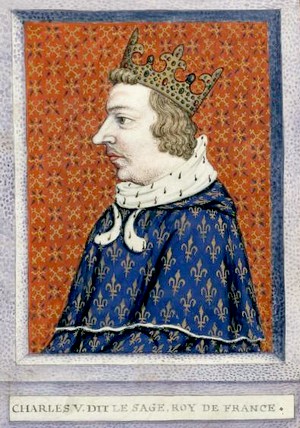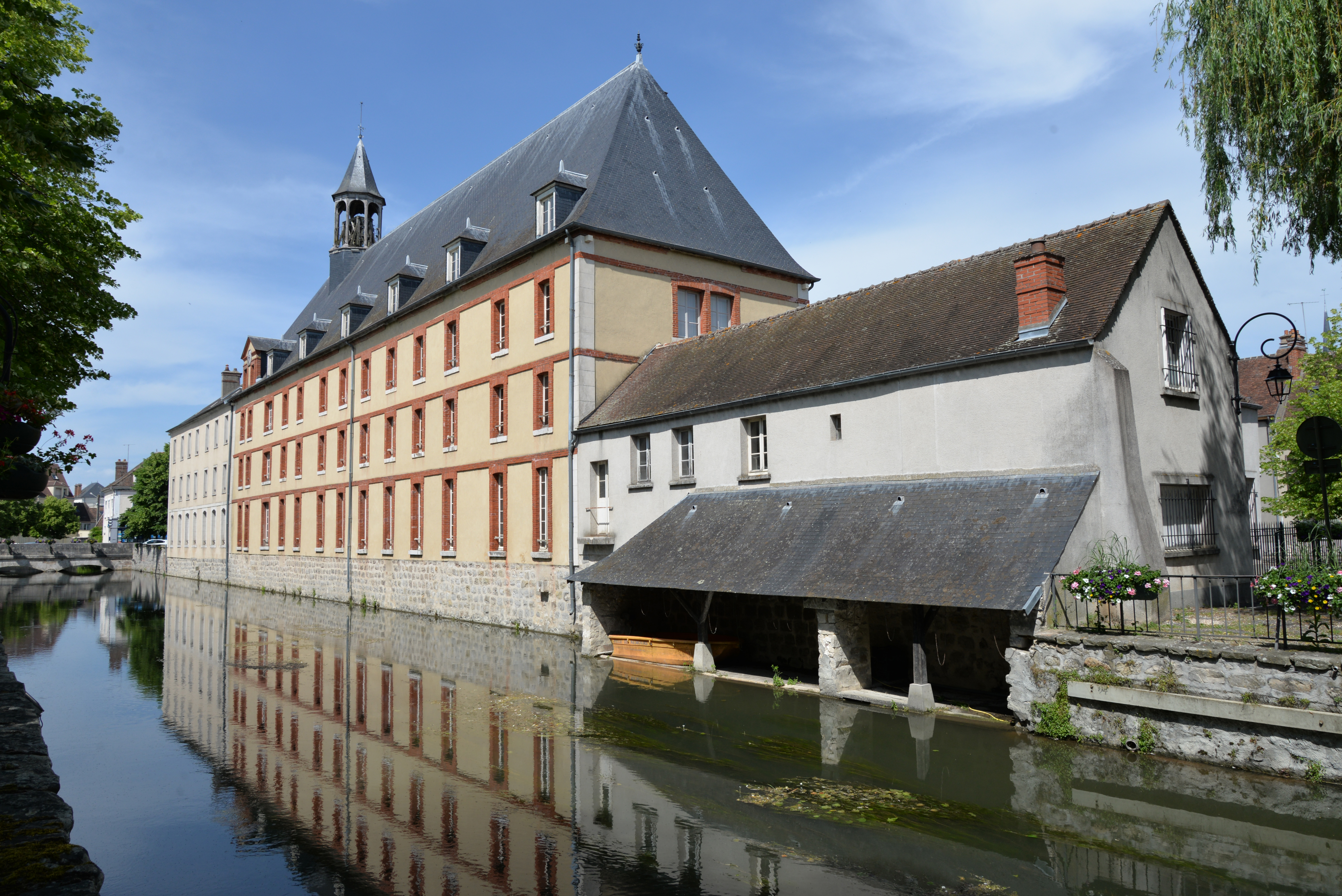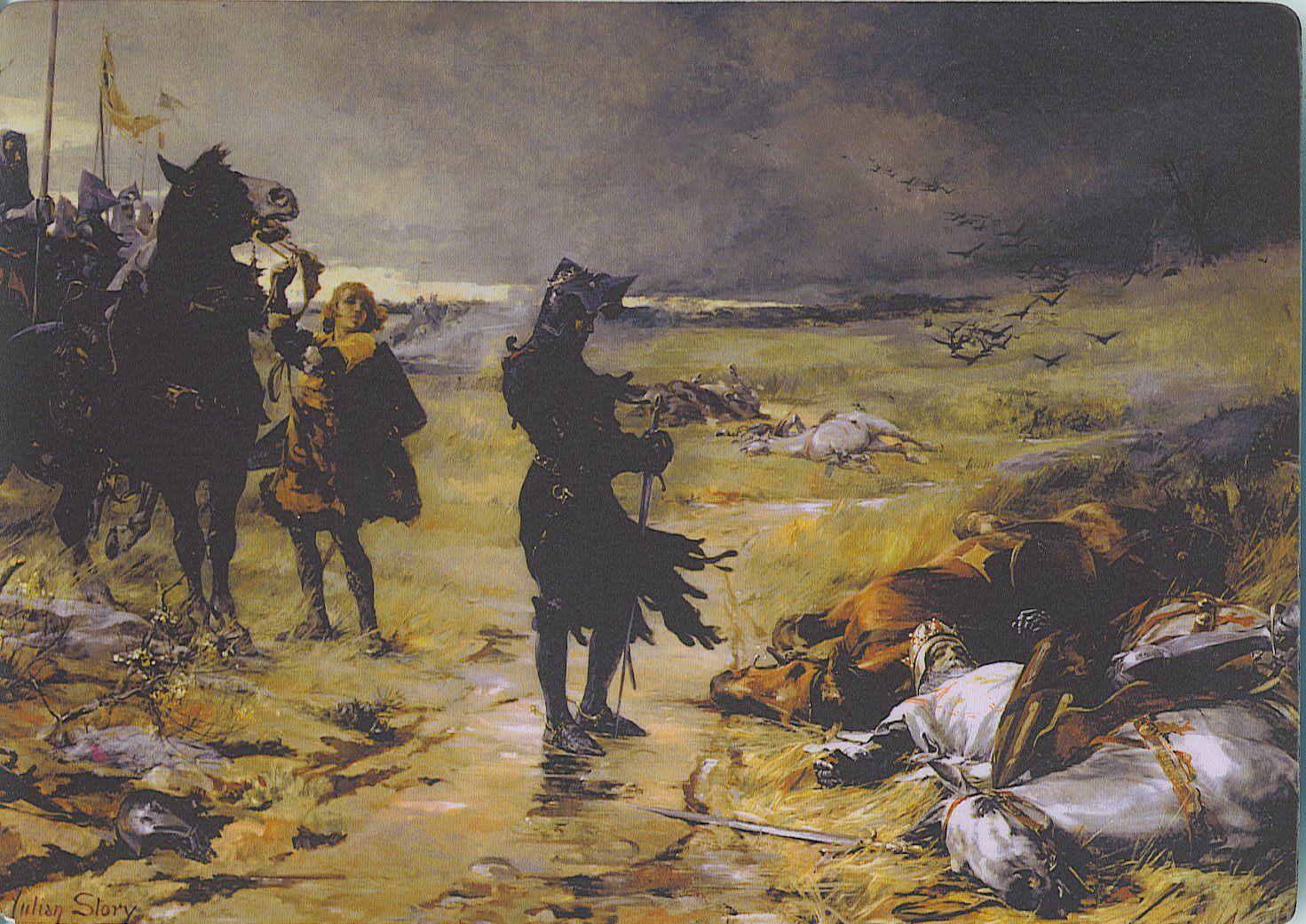|
Captal De Buch
Captal (Lat. capitalis, first, chief ), was a medieval feudal title in Gascony. According to Du Cange the designation was applied loosely to the more illustrious nobles of Aquitaine, counts, viscounts, etc., probably as ''capitales domini'', principal lords, though he quotes more fanciful explanations. As an actual title the word was used only by the lords of Trene, Puychagut, Epernon and Buch (a lordship being an amalgamation of two or more seigniories). It is best known in connection with the famous soldier, Jean III de Grailly, captal de Buch KG (d. 1376), the captal de Buch par excellence, immortalized by Froissart as the confidant of the Black Prince and the champion of the English cause against France. His active part in the war began in 1364, when he ravaged the country between Paris and Rouen Rouen (, ; or ) is a city on the River Seine, in northwestern France. It is in the prefecture of Regions of France, region of Normandy (administrative region), Nor ... [...More Info...] [...Related Items...] OR: [Wikipedia] [Google] [Baidu] [Amazon] |
Feudal
Feudalism, also known as the feudal system, was a combination of legal, economic, military, cultural, and political customs that flourished in Middle Ages, medieval Europe from the 9th to 15th centuries. Broadly defined, it was a way of structuring society around relationships derived from the holding of land in exchange for service or labour. The classic definition, by François Louis Ganshof (1944),François Louis Ganshof (1944). ''Qu'est-ce que la féodalité''. Translated into English by Philip Grierson as ''Feudalism'', with a foreword by F. M. Stenton, 1st ed.: New York and London, 1952; 2nd ed: 1961; 3rd ed.: 1976. describes a set of reciprocal legal and Medieval warfare, military obligations of the warrior nobility and revolved around the key concepts of lords, vassals, and fiefs. A broader definition, as described by Marc Bloch (1939), includes not only the obligations of the warrior nobility but the obligations of all three estates of the realm: the nobility, the cl ... [...More Info...] [...Related Items...] OR: [Wikipedia] [Google] [Baidu] [Amazon] |
Froissart
Jean Froissart ( Old and Middle French: ''Jehan''; sometimes known as John Froissart in English; – ) was a French-speaking medieval author and court historian from the Low Countries who wrote several works, including ''Chronicles'' and ''Meliador'', a long Arthurian romance, and a large body of poetry, both short lyrical forms as well as longer narrative poems. For centuries, Froissart's ''Chronicles'' have been recognised as the chief expression of the chivalric revival of the 14th-century kingdoms of England, France and Scotland. His history is also an important source for the first half of the Hundred Years' War.Michael Jones (2004).Froissart, Jean (1337? – c. 1404). ''Oxford Dictionary of National Biography''. Life What little is known of Froissart's life comes mainly from his historical writings and from archival sources which mention him in the service of aristocrats or receiving gifts from them. Although his poems have also been used in the past to reconstruct aspe ... [...More Info...] [...Related Items...] OR: [Wikipedia] [Google] [Baidu] [Amazon] |
Charles V Of France
Charles V (21 January 1338 – 16 September 1380), called the Wise (; ), was King of France from 1364 to his death in 1380. His reign marked an early high point for France during the Hundred Years' War as his armies recovered much of the territory held by the English and successfully reversed the military losses of his predecessors. Charles became regent of France when his father John II of France, John II was captured by the English at the Battle of Poitiers in 1356. To pay for the defense of the kingdom, Charles raised taxes. As a result, he faced hostility from the French nobility, nobility, led by Charles II of Navarre, Charles the Bad, List of Navarrese monarchs, King of Navarre; the opposition of the French bourgeoisie, which was channeled through the Estates General (France), Estates-General led by Étienne Marcel; and with a peasant revolt known as the Jacquerie. Charles overcame all of these rebellions, but in order to liberate his father, he had to conclude the Treaty ... [...More Info...] [...Related Items...] OR: [Wikipedia] [Google] [Baidu] [Amazon] |
Nemours
Nemours () is a Communes of France, commune in the Seine-et-Marne Departments of France, department in the Île-de-France Regions of France, region in north-central France. Geography Nemours is located on the Loing and its canal, c. south of Melun, on the Moret–Lyon railway. Nemours – Saint-Pierre station has rail connections to Montargis, Melun, Nevers and Paris. History Nemours is supposed to derive its name from the woods (''nemora'') in the midst of which it formerly stood, and discoveries of Gallo-Roman remains indicate its early origin. It was captured by the English in 1420, but derives its historical importance rather from the lordship (afterwards duchy) of Nemours, and the fief lords the Duke of Nemours to which it gave its name. In 1585 a Treaty of Nemours, treaty revoking previous concessions to the Protestants was concluded at Nemours between Catherine de' Medici and the House of Guise, Guises. The Hôtel de Ville, Nemours, Hôtel de Ville was commissioned as a ... [...More Info...] [...Related Items...] OR: [Wikipedia] [Google] [Baidu] [Amazon] |
Cocherel
Cocherel () is a commune in the Seine-et-Marne department in the Île-de-France region in north-central France. History Cocherel and Crépoil (Cocherellium, Crispolium) formed two distinct parishes before 1790 and until 1842 two distinct communes. A royal ordinance of 11 December 1887 united them in a single unit, the chief place of which was fixed at Cocherel. Geography Cocherel is at an altitude that reaches 209 meters near the wood of Montjay. It is, after Saint-Georges, of the commune of Verdot, the highest point of the department of Seine-et-Marne; there is no super-permanent watercourse, but only rivers (la Vanche, Méranne, Plants), which roll rain-water and lead them to the Ourcq river. See also *Communes of the Seine-et-Marne department The following is a list of the 507 communes of the Seine-et-Marne department of France. The communes cooperate in the following intercommunalities (as of 2025): [...More Info...] [...Related Items...] OR: [Wikipedia] [Google] [Baidu] [Amazon] |
Bertrand Du Guesclin
Bertrand du Guesclin (; 1320 – 13 July 1380), nicknamed "The Eagle of Brittany" or "The Black Dog of Brocéliande", was a Breton knight and an important military commander on the French side during the Hundred Years' War. From 1370 to his death, he was Constable of France for King Charles V. Well known for his Fabian strategy, he took part in seven pitched battles and won the five in which he held command. Origins Bertrand du Guesclin was born at Motte-Broons near Dinan, in Brittany, first-born son of Robert du Guesclin and Jeanne de Malmaines. His date of birth is unknown, but is thought to have been sometime in 1320. His family was of minor Breton nobility, the seigneurs of Broons. His native language was Gallo, a langue d'oïl. Bertrand's family may have claimed descent from Aquin, the legendary Muslim king of Bougie in Africa (Viking in effect, the legend conflates Saracens and Arabs with Normans and places Aiquin's origins in the north country) a conceit de ... [...More Info...] [...Related Items...] OR: [Wikipedia] [Google] [Baidu] [Amazon] |
Rouen
Rouen (, ; or ) is a city on the River Seine, in northwestern France. It is in the prefecture of Regions of France, region of Normandy (administrative region), Normandy and the Departments of France, department of Seine-Maritime. Formerly one of the largest and most prosperous cities of medieval Europe, the population of the metropolitan area () is 702,945 (2018). People from Rouen are known as ''Rouennais''. Rouen was the seat of the Exchequer of Normandy during the Middle Ages. It was one of the capitals of the Anglo-Normans, Anglo-Norman and Angevin kings of England, Angevin dynasties, which ruled both England and large parts of modern France from the 11th to the 15th centuries. From the 13th century onwards, the city experienced a remarkable economic boom, thanks in particular to the development of textile factories and river trade. Claimed by both the French and the English during the Hundred Years' War, it was on its soil that Joan of Arc was tried and burned alive on 30 ... [...More Info...] [...Related Items...] OR: [Wikipedia] [Google] [Baidu] [Amazon] |
Paris
Paris () is the Capital city, capital and List of communes in France with over 20,000 inhabitants, largest city of France. With an estimated population of 2,048,472 residents in January 2025 in an area of more than , Paris is the List of cities in the European Union by population within city limits, fourth-most populous city in the European Union and the List of cities proper by population density, 30th most densely populated city in the world in 2022. Since the 17th century, Paris has been one of the world's major centres of finance, diplomacy, commerce, culture, Fashion capital, fashion, and gastronomy. Because of its leading role in the French art, arts and Science and technology in France, sciences and its early adoption of extensive street lighting, Paris became known as the City of Light in the 19th century. The City of Paris is the centre of the Île-de-France region, or Paris Region, with an official estimated population of 12,271,794 inhabitants in January 2023, or ... [...More Info...] [...Related Items...] OR: [Wikipedia] [Google] [Baidu] [Amazon] |
Black Prince
Edward of Woodstock (15 June 1330 – 8 June 1376), known as the Black Prince, was the eldest son and heir apparent of King Edward III of England. He died before his father and so his son, Richard II, succeeded to the throne instead. Edward nevertheless earned distinction as one of the most successful English commanders during the Hundred Years' War, being regarded by his English contemporaries as a model of chivalry and one of the greatest knights of his age. Edward was made Duke of Cornwall, the first English dukedom, in 1337. He was guardian of the kingdom in his father's absence in 1338, 1340, and 1342. He was created Prince of Wales in 1343 and knighted by his father at La Hougue in 1346. In 1346, Prince Edward commanded the vanguard at the Battle of Crécy, his father intentionally leaving him to win the battle. He took part in Edward III's 1349 Calais expedition. In 1355, he was appointed the king's lieutenant in Gascony and ordered to lead an army into Aquitaine on ... [...More Info...] [...Related Items...] OR: [Wikipedia] [Google] [Baidu] [Amazon] |
Order Of The Garter
The Most Noble Order of the Garter is an order of chivalry founded by Edward III of England in 1348. The most senior order of knighthood in the Orders, decorations, and medals of the United Kingdom, British honours system, it is outranked in United Kingdom order of precedence, precedence only by the Award, decorations of the Victoria Cross and the George Cross. The Order of the Garter is dedicated to the image and Coat of arms, arms of Saint George, England's patron saint. Appointments are at the Monarchy of the United Kingdom, Sovereign's sole discretion, typically made in recognition of national contribution, service to the Crown, or for distinguished personal service to the Monarch. Membership of the order is limited to the sovereign, the Prince of Wales, and no more than 24 living members, or Companions. The order also includes Supernumerary Knights and Ladies (e.g., members of the British royal family and foreign monarchs). The order's emblem is a garter (stockings), gar ... [...More Info...] [...Related Items...] OR: [Wikipedia] [Google] [Baidu] [Amazon] |
Gascony
Gascony (; ) was a province of the southwestern Kingdom of France that succeeded the Duchy of Gascony (602–1453). From the 17th century until the French Revolution (1789–1799), it was part of the combined Province of Guyenne and Gascony. The region is vaguely defined, and the distinction between Guyenne and Gascony is unclear; by some they are seen to overlap, while others consider Gascony a part of Guyenne. Most definitions put Gascony east and south of Bordeaux. It is currently divided between the region of Nouvelle-Aquitaine (departments of Landes, Pyrénées-Atlantiques, southwestern Gironde, and southern Lot-et-Garonne) and the region of Occitanie (departments of Gers, Hautes-Pyrénées, southwestern Tarn-et-Garonne, and western Haute-Garonne). Gascony was historically inhabited by Basque-related people who appear to have spoken a language similar to Basque. The name Gascony comes from the same root as the word Basque (see Wasconia below). From the Middle Ag ... [...More Info...] [...Related Items...] OR: [Wikipedia] [Google] [Baidu] [Amazon] |
Jean III De Grailly
Jean III de Grailly (aka. John De Grailly, died 7 September 1376), Captal de Buch, , was a Gascon nobleman and a military leader in the Hundred Years' War, who was praised by the chronicler Jean Froissart as an ideal of chivalry. Biography He was the son of Jean II de Grailly, Captal de Buch, Vicomte de Benauges, and of Blanch de Foix, a cousin of the counts of Foix. Attached to the English side in the conflict, he was made Count of Bigorre by Edward III of England, and was also a founder and the fourth Knight of the Garter in 1348. He played a decisive role as a cavalry leader under Edward, the Black Prince in the Battle of Poitiers in 1356, with de Buch leading a flanking move against the French that resulted in the capture of the king of France, ( John II), as well as many of his nobles. John was taken to London by the Black Prince and held to ransom. In 1364, he commanded the forces of Charles II of Navarre in Normandy, where he was defeated and captured by Bert ... [...More Info...] [...Related Items...] OR: [Wikipedia] [Google] [Baidu] [Amazon] |








